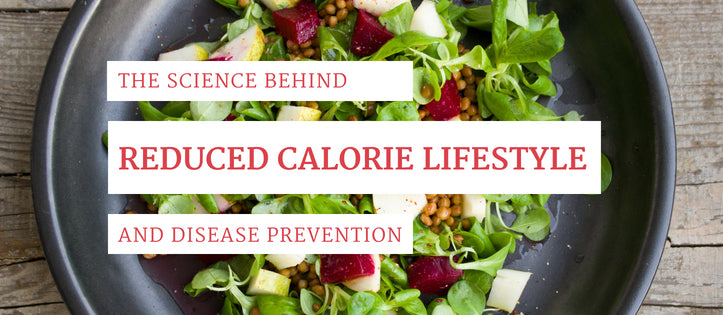Chronic diseases are classified as non-contagious, long-term illnesses and are quite often preventable by diet and exercise. Conditions like heart disease, cancer, and stroke are the number one cause of death worldwide and frequently develop through obesity, diabetes, poor diet, overconsumption of calories, and lack of physical activity.
Defining Obesity
Medical professionals classify obesity as having a body mass index (BMI) of 30 or higher, with a BMI over 40 defined as morbidly obese. Obesity, a well-known growing epidemic, and is nearly 100 percent preventable. The cause of obesity is the imbalance of calorie intake to energy use. Even for people with conditions limiting the ability to engage in an activity or suffer from hormonal or thyroid issues, making healthy dietary choices and keeping calorie intake low can prevent or eliminate obesity over time.
How Is Being Overweight Classified Differently Than Obesity?
The term overweight is labeled as a BMI between 25 to 30 and is more common than clinical obesity. However, being overweight also is connected to several health risks and diseases. Studies found that overweight people have a two to three-fold elevated risk of coronary artery disease, and a 10-fold increased risk of diabetes, as opposed to individuals with a BMI under 23. Type 2 diabetes additionally increases your risk of other conditions, such as cardiovascular disease.

Photo by alan KO on Unsplash
Calorie Intake and Cancer
Overindulgence of calories doesn’t only affect your waistline. Being overweight surges your risk of some types of cancer. Experts found convincing evidence that being overweight increases your chances of bowel, pancreas, kidney, esophagus, and breast cancers. There is evidence it might increase your chances of gallbladder cancer. Bowel and breast cancers are among the most common cancerous diseases in New Zealand.

Photo by Ani Kolleshi on Unsplash
Cardiovascular Disease Is Not Something to Ignore
Cardiovascular disease—often referred to as heart disease—is one of the largest killers in the world. Fortunately, cardiovascular disease is often preventable through diet and physical activity. A reduction of salt can help reduce blood pressure. Elevated blood pressure is also a contributor to heart disease and stroke. So, eating less high-calorie and fewer salty foods can help reduce these risks.
Body Fat and Type 2 Diabetes
The most prevalent form of diabetes in adults is type 2, and excessive body fat is the number one risk factor in acquiring this form of diabetes. The uplifting news is that losing as little as 10 percent of body weight can decrease your risk and even reverse type 2 diabetes in many people. The nature and amount of carbohydrates you eat directly affects your blood glucose levels. Lower calorie diets rich in protein and vegetables, and low in sugar and excessive carbohydrates can help prevent and manage diabetes.
Abdominal Measurements and Health Risks
Waist measurements taken in a natural (non-corseted) state reflect fat accumulation in the abdomen. Researchers found that waist circumference can significantly predict a person’s risk for diseases such as coronary artery disease, diabetes, and stroke. This connection is believed to be because excessive triglycerides—fats from both gratuitous calorie intake and foods such as butter, excess sugar, and alcohol—accumulate around your internal organs such as your heart, liver, and pancreas. This accumulation is more dangerous than fat buildup directly under the skin.
The Very Low-Calorie Diet
A very low-calorie diet (VLCD) is a medically supervised diet plan in which patients consume 800 calories or less per day for a brief time—no more than three months. A VLCD often involves substituting most of your meals with low-calorie, specially prepared shakes, soups or health bars. Health professionals occasionally recommend VLCDs to aid with quick weight loss in adults who are obese and dealing with distinct circumstances. A VLCD should only be used in extreme situations under medical supervision.

Photo by Brooke Lark on Unsplash
Regardless of the Diet, Portions Are the Key
Ultimately, whether you are vegan, eat a keto, or follow a Paleo diet, portion control is everything. Regardless of the health benefits of any given diet plan, if you overindulge in your calorie intake—even on healthy foods like fruits or nuts—you can gain weight, or at least struggle to lose excess fat. The general guideline is to eat roughly the volume of food you could fit into your cupped hand. Of course, the healthier the food, the more health benefits you’ll gain. So, try to include:
- Dark leafy greens.
- Abundant amounts of vegetables.
- Fruits high in fiber or particularly high in vitamins, such as kiwis, apples, and avocados.
- Whole grains.
- Lean protein such as beans, tofu, chicken, or fish.
Consume Omega-3 and DHA
It’s also highly recommended that you consume plenty of omega-3 fatty acids and DHA to prevent cardiovascular issues. Healthy fish and seed consumption can do a great deal for your health. The omega-3 fatty acids and the DHA in fish such as salmon, tuna, and mackerel as well as plants such as chia seeds, Brussels sprouts, and walnuts are proven to reduce the risk of sudden death as well as heart disease.
Pay Attention to Calories in Beverages
People often think about food alone when they regard their calorie intake. However, not only can beverages add up to an entire day’s worth of calories if you consume sugary drinks, lots of juices, and high-fat or high-sugar coffee drinks. Studies found that the rapid intake from sugars and beverages like these spike your blood sugar more quickly than in most foods.
Limit Both Sugary and Artificial Sweetened Drinks
Additionally, studies found that even diet drinks such as diet soda can slow down your metabolism, especially when consumed with carbohydrates. Sugary beverages contribute notably to the overconsumption of calories, partially because the body and metabolism seem to be poorly regulated by calories in liquid form. So, ditch both the diet and sugar drinks unless they’re vitamin-packed whole-food smoothies or juices in moderation.
Calories Are Relative When You Factor Exercise
Exercise is linked to health benefits in countless ways. One connection between the reduced calorie lifestyle and working out is that of your calorie intake to calorie burn ratio. Naturally, the more calories you burn, the higher your calorie intake can be while remaining on the path of a low-calorie lifestyle, at least relative to your fitness regimen.
How Much Exercise Should I Aim for Weekly?
It’s vital to keep in mind that certain types of exercise, such as doing crunches, burn less calories in comparison to high impact cardio. So, before you binge on more calories, know how many you’re using as energy. You should partake in strength training exercises at least two to three times weekly to maintain bone and muscle health as well as keep your metabolism high. For optimal health benefits, aim for either five hours of moderate cardio or two and a half hours of vigorous activity spread throughout the week.
Other Options for Fitness
If you can’t stand the idea of exercise, there are many ways to get active and burn off calories already consumed without feeling like you’re about to collapse. Something as simple as walking touts numerous benefits. Even a slow stroll can burn up to 255 calories per hour. A few other activities for those who are anti-exercise to consider:
- Gardening burns around 330 calories per hour.
- Tai Chi burns around 273 calories per hour.
- Ice skating burns over 600 calories per hour.
- Housework (something that has to get done anyhow) can burn up to 250 calories per hour.

Photo by Jon Flobrant on Unsplash
Think of Your Heart as a Muscle to Tone
To keep your heart healthy, maintain a routine of physical activity and diet of foods that benefit the cardiovascular system. Remember, your heart is a muscle, too. Exercise does not only maintain the muscle tone you can see in your appearance and help burn calories, but peak fitness also assists your heart to pump blood more efficiently. More efficient blood flow through your body can help with everything from improved brain function to healthier skin.
The Health Care Cost of Too Many Calories
Overeating doesn’t just affect you personally, but society as a whole. In a study on healthcare costs caused by obesity in a 1990 New Zealand survey found the prevalence of poor lifestyle choices accumulates massive health care bills. The investigation took the expenses from sources like hospitals, general practitioner visits, pharmacies, and lab tests.
Calculations were conservative, yet the study estimated the medical costs connected to obesity was NZ$135 million. This study was almost 30 years ago, and the overweight population in both New Zealand and Australia has risen since that time.
Age Doesn’t Have to Equal Weight Gain
You shouldn’t be discouraged by statistics about disease risks in association with body mass index. The prevention of many of these conditions is more preventable than previously believed. The prevailing stigma is that the older we get, the more inevitable weight gain becomes, but that is a false inevitability. For example, middle-aged women in West Africa were found to have a significantly lower BMI than the average person in western countries, partially because these women walk a substantial amount daily.
The excellent news is that some of the most common diseases and prevalent causes of terminal illness are preventable with a reduced-calorie lifestyle of healthy foods, mixed with some regular exercise.
While it might sound more enjoyable to sit on the couch and snack on something sweet or salty, it’s easy to get motivated when you consider the severe health risks that consuming too many calories poses. Don’t fall into the excuse of age when it comes to eating right to staying fit. You can reduce calories slowly by making healthy substitutions and healthier choices for even one of your meals per day. Stay fit and lean and stay healthy!

